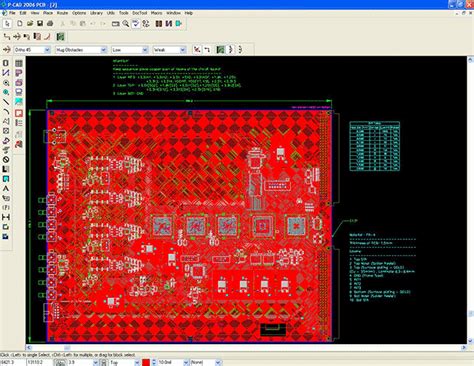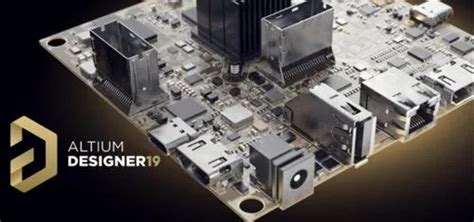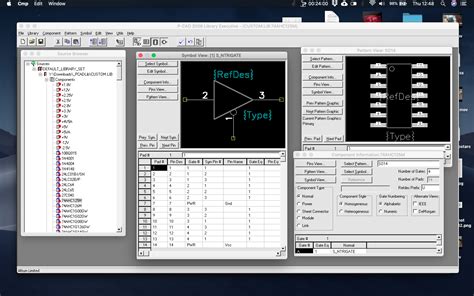What is Altium?
Altium is a software company that provides a range of electronic design automation (EDA) tools for Printed Circuit Board (PCB) design and electronics engineering. The company’s flagship product, Altium Designer, is a comprehensive PCB Design software that integrates schematic capture, 3D PCB design, and manufacturing output generation in a single unified environment.
Key features of Altium Designer
- Schematic capture
- PCB layout and routing
- 3D visualization and modeling
- ECAD/MCAD collaboration
- Design rule checking (DRC)
- Manufacturing output generation
What is CAD?
CAD, or Computer-Aided Design, refers to the use of computer systems to assist in the creation, modification, analysis, or optimization of a design. CAD software is used to increase the productivity of the designer, improve the quality of design, improve communications through documentation, and to create a database for manufacturing.
Types of CAD software
- 2D CAD: Used for creating flat drawings, such as floor plans and electrical diagrams.
- 3D CAD: Used for creating three-dimensional models of physical objects, such as mechanical parts and architectural designs.
- Parametric CAD: Allows designers to create models using parameters, which can be easily modified to generate variations of the design.
- Direct CAD: Provides a more intuitive and flexible approach to 3D modeling, allowing designers to directly manipulate the geometry of the model.

Comparing Altium with traditional CAD software
While Altium Designer shares some similarities with traditional CAD software, there are also significant differences that set it apart. Here’s a comparison of Altium Designer with traditional CAD software:
| Feature | Altium Designer | Traditional CAD |
|---|---|---|
| Primary focus | PCB design and electronics engineering | Mechanical design and drafting |
| Schematic capture | Integrated schematic capture tool | Usually requires a separate schematic capture tool |
| PCB layout and routing | Advanced PCB layout and routing capabilities | Limited or no PCB design capabilities |
| 3D visualization | Integrated 3D visualization and modeling | 3D modeling is a core feature |
| ECAD/MCAD collaboration | Supports collaboration with mechanical CAD tools | Limited or no support for ECAD collaboration |
| Design rule checking | Integrated design rule checking for PCB design | Limited or no design rule checking for PCBs |
| Manufacturing output | Generates manufacturing output files for PCB fabrication | Generates manufacturing output files for mechanical parts |

The role of Altium in the PCB design process
Altium Designer plays a crucial role in the PCB design process, providing a comprehensive set of tools for designing and manufacturing electronic products. The software is used by electronic engineers, PCB designers, and electronics manufacturers worldwide.
Key stages of the PCB design process
- Schematic capture: Designers create a schematic diagram of the electronic circuit using Altium Designer’s schematic capture tool.
- PCB layout: The schematic is then transferred to the PCB layout environment, where designers place components and route the connections between them.
- 3D visualization: Altium Designer’s 3D visualization tools allow designers to view and analyze the PCB design in three dimensions, helping to identify potential issues and optimize the layout.
- Design rule checking: The software’s integrated design rule checking tools ensure that the PCB design meets the necessary manufacturing and performance requirements.
- Manufacturing output: Once the PCB design is finalized, Altium Designer generates the necessary manufacturing output files, such as Gerber files and drill files, for PCB fabrication.

Altium’s integration with other design tools
Altium Designer supports integration with various other design tools, enabling seamless collaboration between electronic and mechanical design teams.
Integration with mechanical CAD (MCAD) tools
Altium Designer’s ECAD/MCAD collaboration features allow electronic designers to work closely with mechanical designers, ensuring that the PCB design fits properly within the mechanical enclosure. The software supports bidirectional data exchange with popular MCAD tools, such as SolidWorks and Autodesk Inventor.
Integration with version control systems
Altium Designer also integrates with version control systems, such as Git and Subversion, enabling design teams to manage and track changes to their PCB designs effectively. This integration helps to streamline the design process and ensures that all team members are working with the most up-to-date version of the design.
The future of Altium and CAD in PCB design
As the electronics industry continues to evolve, so too will the tools and technologies used in PCB design. Altium is at the forefront of this evolution, constantly innovating and improving its software to meet the changing needs of electronic designers and manufacturers.
Emerging trends in PCB design
- Increased complexity: As electronic devices become more sophisticated, PCB designs are becoming increasingly complex, with higher component densities and more intricate layouts.
- Miniaturization: The trend towards smaller, more compact electronic devices is driving the need for miniaturized PCBs and advanced packaging technologies.
- High-speed design: With the growing demand for faster data transfer rates, high-speed PCB design techniques are becoming increasingly important.
- Internet of Things (IoT): The proliferation of IoT devices is creating new challenges and opportunities for PCB designers, requiring the integration of wireless connectivity, sensors, and low-power components.
How Altium is addressing these trends
Altium is continuously developing new features and capabilities in its software to address the emerging trends in PCB design. Some of the ways Altium is addressing these trends include:
- Advanced routing algorithms: Altium Designer incorporates advanced routing algorithms to handle the increasing complexity of PCB designs, enabling designers to create high-density layouts with ease.
- Support for advanced packaging technologies: The software supports various advanced packaging technologies, such as ball grid arrays (BGAs) and chip-scale packages (CSPs), allowing designers to create miniaturized PCBs.
- High-speed design tools: Altium Designer includes a range of tools and features specifically designed for high-speed PCB design, such as impedance matching, signal integrity analysis, and electromagnetic compatibility (EMC) simulation.
- IoT design templates: The software provides design templates and reference designs for various IoT applications, helping designers to quickly and easily create PCBs for IoT devices.
Conclusion
In conclusion, while Altium Designer shares some similarities with traditional CAD software, it is primarily focused on PCB design and electronics engineering. The software’s comprehensive set of tools and features, combined with its ability to integrate with other design tools and technologies, make it an essential tool for electronic designers and manufacturers.
As the electronics industry continues to evolve, Altium will undoubtedly continue to innovate and improve its software, helping designers to create the next generation of electronic devices and systems.
FAQ
-
Is Altium Designer only used for PCB design?
No, while PCB design is the primary focus of Altium Designer, the software also includes tools for schematic capture, 3D visualization, and ECAD/MCAD collaboration. -
Can Altium Designer import designs from other PCB design tools?
Yes, Altium Designer can import designs from various other PCB design tools, such as Eagle, KiCad, and OrCAD. -
Does Altium Designer support high-speed PCB design?
Yes, Altium Designer includes a range of tools and features specifically designed for high-speed PCB design, such as impedance matching, signal integrity analysis, and electromagnetic compatibility (EMC) simulation. -
Can Altium Designer be used for designing flexible PCBs?
Yes, Altium Designer supports the design of flexible PCBs, including the ability to define bend regions and simulate the effects of bending on the PCB. -
Is Altium Designer available for both Windows and macOS?
No, Altium Designer is currently only available for the Windows operating system. However, it can be run on macOS using virtualization software such as Parallels or VMware.
